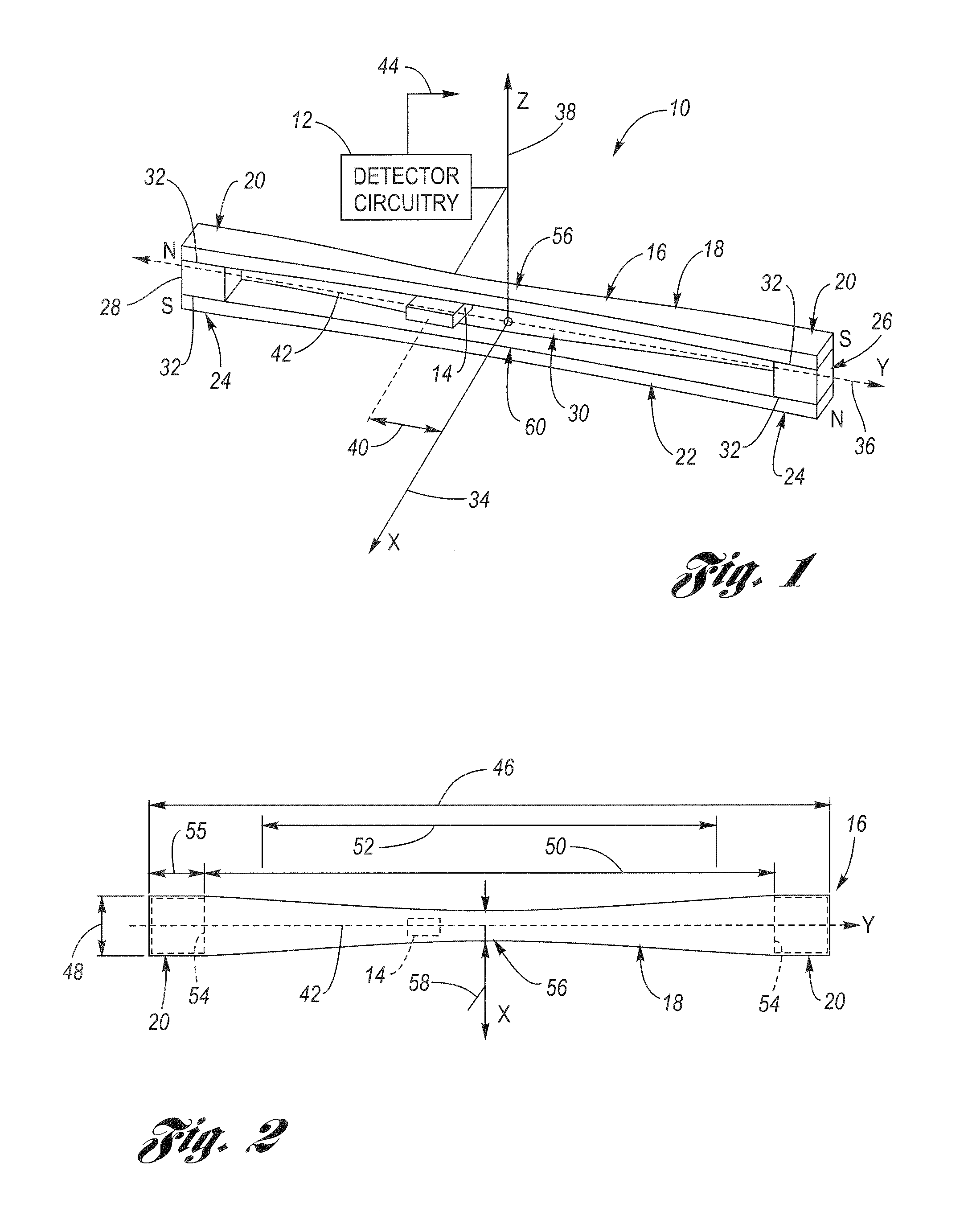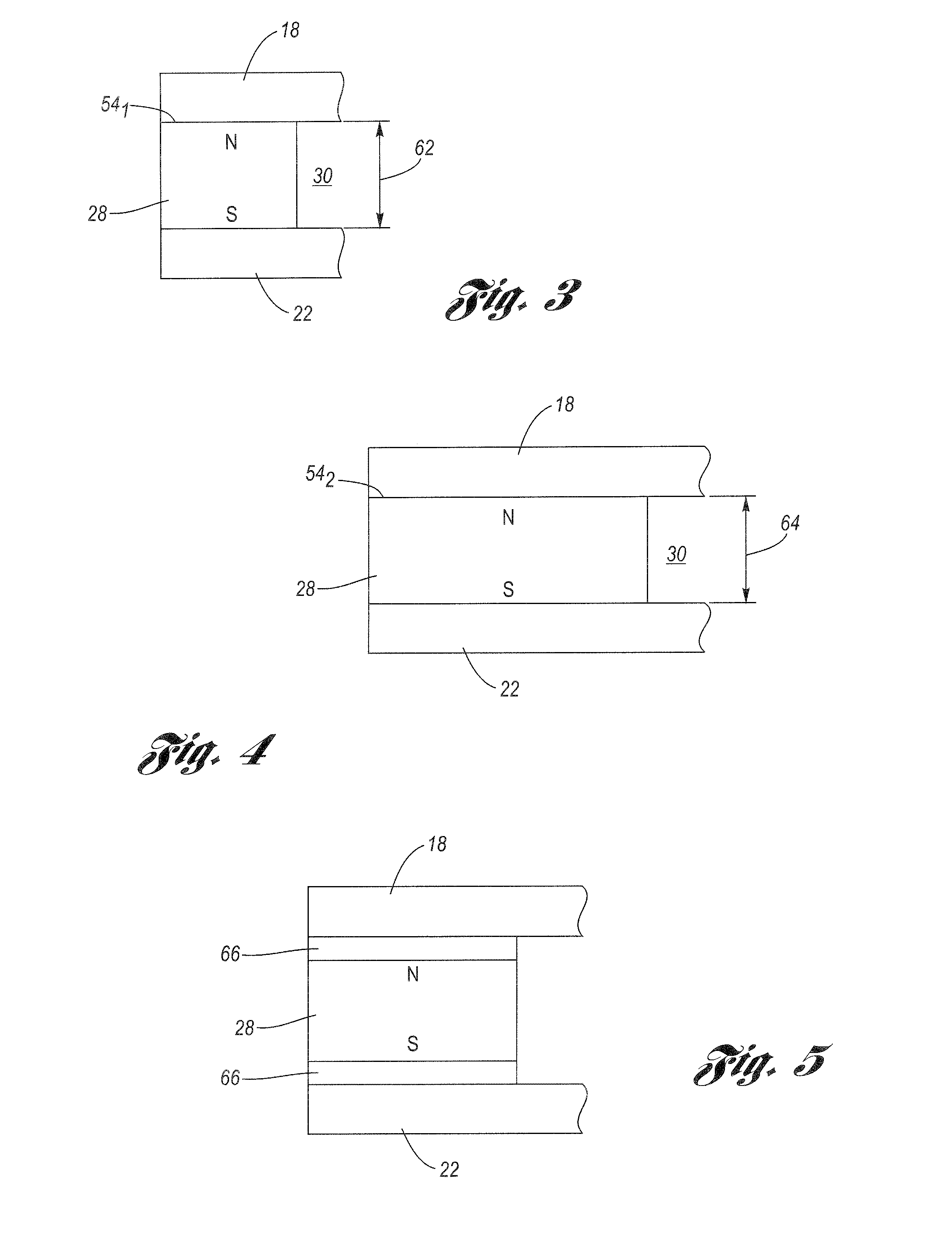Non-contacting rotary and linear travel sensor
a technology of non-contact rotary and linear travel, which is applied in the field of position sensors, can solve the problems of sensor error (non-linearity) from the concentrator's magnetic hysteresis, the magnetic flux flowing through the concentrator changes, and the magnetic hysteresis associated with the flux concentrator, so as to improve the signal-to-noise ratio and detection range, improve the detection angle and/or linear travel measurement, and improve the signal-to-
- Summary
- Abstract
- Description
- Claims
- Application Information
AI Technical Summary
Benefits of technology
Problems solved by technology
Method used
Image
Examples
Embodiment Construction
[0021]Referring now to the drawings wherein like reference numerals are used to identify identical components in the various views, FIG. 1 is a simplified isometric view of a linear position sensor 10 of the present invention. Sensor 10 is configured to cooperate with a detector circuit 12. The sensor 10 includes a galvanomagnetic sensing element 14 configured to sense the magnetic flux passing therethrough, and magnet / flux concentrator assembly 16. In general, the sensing element 14 and the magnet / flux concentrator assembly 16 are configured to move one with respect to the other. In the illustrated embodiment, however, sensing element 14 is stationary while assembly 16 is configured to be movable with respect to sensing element 14. It should be understood, however, that this configuration may be reversed such that the sensing element 14 is movable and the assembly 16 is stationary, with the same effect of one “moving” with respect to the other. Sensing element 14 may comprise conve...
PUM
 Login to View More
Login to View More Abstract
Description
Claims
Application Information
 Login to View More
Login to View More - R&D
- Intellectual Property
- Life Sciences
- Materials
- Tech Scout
- Unparalleled Data Quality
- Higher Quality Content
- 60% Fewer Hallucinations
Browse by: Latest US Patents, China's latest patents, Technical Efficacy Thesaurus, Application Domain, Technology Topic, Popular Technical Reports.
© 2025 PatSnap. All rights reserved.Legal|Privacy policy|Modern Slavery Act Transparency Statement|Sitemap|About US| Contact US: help@patsnap.com



